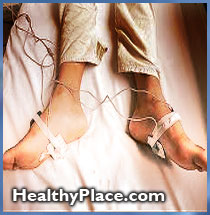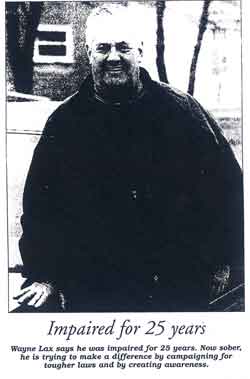Depression in School-Age Children and Adolescents
Untreated depression. It's the number one cause of suicide among teens and adults. Risk factors of teen suicide, and what to do if a child or adolescent may be suicidal.
 The statistics are startling. As many as 8 percent of adolescents attempt suicide today. And completed suicides have increased by 300 percent over the last 30 years. (Girls make more attempts at suicide, but boys complete suicide four to five times as often as girls.) It is also known that 60-80 percent of suicide victims have a depressive disorder. A 1998 study showed, however, that only 7 percent of suicide victims are receiving mental health care at the time of their death.
The statistics are startling. As many as 8 percent of adolescents attempt suicide today. And completed suicides have increased by 300 percent over the last 30 years. (Girls make more attempts at suicide, but boys complete suicide four to five times as often as girls.) It is also known that 60-80 percent of suicide victims have a depressive disorder. A 1998 study showed, however, that only 7 percent of suicide victims are receiving mental health care at the time of their death.
Characteristics of Depression
Up until about 30 years ago, many in the field of psychology believed that children were incapable of experiencing depression. Others believed children could be depressed, but would most likely express their dysphoria indirectly through behavior problems, thereby "masking" their depression.
Three decades of research have dispelled these myths. Today, we know that children experience and manifest depression in ways similar to adults, albeit with some symptoms unique to their developmental age.
Children can experience depression at any age, even shortly after birth. In very young children, depression can manifest in a number of ways including failure to thrive, disrupted attachments to others, developmental delays, social withdrawal, separation anxiety, sleeping and eating problems, and dangerous behaviors. For the purposes of this article, however, we will focus on school-aged children and adolescents.
In general, depression affects a person's physical, cognitive, emotional/affective, and motivational well-being, no matter their age. For example, a child with depression between the ages of 6 and 12 may exhibit fatigue, difficulty with schoolwork, apathy and/or a lack of motivation. An adolescent or teen may be oversleeping, socially isolated, acting out in self-destructive ways and/or have a sense of hopelessness.
Prevalence and Risk Factors
While only 2 percent of pre-teen school-age children and 3-5 percent of teenagers have clinical depression, it is the most common diagnosis of children in a clinical setting (40-50 percent of diagnoses). The lifetime risk of depression in females is 10-25 percent and in males, 5-12 percent.
Children and teens who are considered at high risk for depression disorders include:
- children referred to a mental health provider for school problems
- children with medical problems
- gay and lesbian adolescents
- rural vs. urban adolescents
- incarcerated adolescents
- pregnant adolescents
- children with a family history of depression
Diagnostic Categories
Transient depression or sadness is not uncommon in children. For a diagnosis of clinical depression, however, it must be causing an impairment in the child's ability to function. Two primary types of depression in children are dysthymic disorder and major depressive disorder.
Dysthymic disorder is the less severe of the two, but lasts longer. The child exhibits chronic depression or irritability for more than a year, with a median duration of three years. Onset typically occurs at about 7 years of age with the child exhibiting at least two of six symptoms. A majority of these children go on to develop a major depressive disorder within five years, resulting in a condition known as "double depression." However, 89 percent of pre-teens with untreated dysthymic disorder will experience remission within six years.
Major depressive disorders have a shorter duration (greater than two weeks, with a median duration of 32 weeks) but are more severe than dysthymic disorders. A child with major depressive disorder exhibits at least five of nine symptoms, including a persistent depressed or irritable mood and/or a loss of pleasure. Typical onset for major depressive disorder is 10-11 years of age, and there is a 90 percent rate of remission (for untreated disorders) within one and a half years.
The prevalence of depression increases with age, affecting as many as 5 percent of all teenagers, and as many as one-in-four women and one-in-five men in adulthood. Fifty percent of those with a major depressive disorder will have a second episode in their lifetime.
In many cases, depressive disorders overlap with other diagnoses. These may include: anxiety disorders (in one-third to two-thirds of children with depression); attention deficit hyperactivity disorder (in 20-30 percent); disruptive behavior disorders (in one-third to one-half of patients); learning disorders; eating disorders in females; and substance abuse in adolescents.
The Risk of Suicide
As mentioned above, the rate of suicide has increased three-fold since the early 1970s, and is the major consequence of untreated depression. It is a trend that demands greater awareness, in order to prevent these deaths and better treat those at risk.
Completed suicides are rare before the age of 10, but the risk increases during adolescence. Risk factors for child and teen suicide include psychiatric disorders such as depression (often untreated), substance abuse, conduct disorders, and impulse control problems. There are many behavioral and emotional clues that can also be signs that a young person is at risk for suicide. A lack of coping skills and/or poor problem-solving skills are also risk factors that should not be overlooked. Drug and alcohol abuse is prevalent among those who commit suicide. Approximately one-third of young people who commit suicide are intoxicated at the time of their death. Other risks include access to firearms and lack of adult supervision.
Stressful life events, such as family conflict, major life changes, a history of abuse and or pregnancy are also factors that can trigger thoughts of suicide and even action. If a young person has attempted suicide in the past, there's a good chance they will try again. More than 40 percent will go on to make a second attempt. Ten to 14 percent will go on to complete a suicide.
Unfortunately, suicide can be difficult to predict. For someone at risk for suicide, a precipitant may be a shameful or humiliating experience such as the break-up of a relationship (19 percent), conflicts over sexual orientation, or failure in school. Another "trigger" for suicide may be ongoing stressors in life, with a sense that things will never get better.
Assessment, Treatment and Intervention
Assessment for childhood depression begins with initial screening, typically by a child psychologist, using a measure such as the Children's Depression Inventory (Kovacs, 1982). If the assessment is positive, classification includes further assessment for symptoms listed previously, the onset, stability and duration of symptoms, as well as family history. It is also important to assess the child for anxiety disorders, ADHD, conduct disorders, etc; school performance; social relationships; and substance abuse (in adolescents).
Alternative causes for the child's depression should also be considered and ruled out, including causes associated with the child's developmental and medical history.
Targeting those children and teens who are at high risk for depression, or who are facing high-risk transitions (such as moving from grade school to junior high) is key to prevention. Protective factors include a supportive family environment and an extended support system that encourages positive coping. The Optimistic Child, by Martin Seligman, 1995, is a good book to recommend to parents on preventing depression and building a child's coping skills.
Interventions for diagnosed clinical depression can be highly successful and include both medications and individual and family therapy.
If there are any concerns that a child or adolescent may be suicidal:
- Do not hesitate to refer them to a mental health professional for assessment. If immediate assessment is needed, take the child to the emergency room.
- Always take threats of suicide seriously.
- If the child has stated an intent to commit suicide, and has a plan and a means to carry it out, they are at very high risk and need to be kept safe and supervised in a hospital.
The major "treatment" for suicidal behavior is to find and treat the underlying cause of the behavior, whether it's depression, substance abuse, or something else.
Conclusion
While 2-5 percent of children and adolescents experience clinical depression (nearly as many kids as have ADHD), it is often "missed" by those around them, because it can be less obvious than other more disruptive behavior disorders. Left untreated, it can have a significant negative impact on development, well-being and future happiness, with untreated depression being the major cause of suicide. However, with treatment, including medications and/or psychotherapy, the majority of patients show improvement, with a shorter duration of their depression and a reduction in the negative impact of their symptoms.
Source: A Pediatric Perspective, July/August 2000 Volume 9 Number 4
For the most comprehensive information about Depression, visit our Depression Community Center here, at HealthyPlace.com.
next: Neurofeedback for Depression and ADHD
~ adhd library articles
~ all add/adhd articles
APA Reference
Staff, H.
(2000, July 1). Depression in School-Age Children and Adolescents, HealthyPlace. Retrieved
on 2026, January 2 from https://www.healthyplace.com/adhd/articles/depression-in-school-age-children-and-adolescents
 Yesterday I took my cat to the vet. That sounds so simple a task ... and quick. The words are so short on my To Do List. "Cat to Vet." How short and sweet. One would think it would only take a moment to accomplish. Imagine my amazement when upon reflection I realized it had, in reality, taken three hours.
Yesterday I took my cat to the vet. That sounds so simple a task ... and quick. The words are so short on my To Do List. "Cat to Vet." How short and sweet. One would think it would only take a moment to accomplish. Imagine my amazement when upon reflection I realized it had, in reality, taken three hours. Chronically ill children tend to be more submissive and less socially outgoing than healthy children, a new study shows. Further, kids who live with pain and physical restrictions may be more likely to have problems relating to their peers.
Chronically ill children tend to be more submissive and less socially outgoing than healthy children, a new study shows. Further, kids who live with pain and physical restrictions may be more likely to have problems relating to their peers. The extensive memory loss described by Ann Lewis in the accompanying article reinforces some of the widespread negative impressions about electroconvulsive therapy. Even supporters of ECT acknowledge that memory loss is a common side effect, though they say it is typically far less severe than that reported by Lewis.
The extensive memory loss described by Ann Lewis in the accompanying article reinforces some of the widespread negative impressions about electroconvulsive therapy. Even supporters of ECT acknowledge that memory loss is a common side effect, though they say it is typically far less severe than that reported by Lewis. I've been asked over and over again whether undergoing electroconvulsive therapy -- also known as ECT or shock therapy -- was a good decision. And whether I would have ECT again under the same circumstances.
I've been asked over and over again whether undergoing electroconvulsive therapy -- also known as ECT or shock therapy -- was a good decision. And whether I would have ECT again under the same circumstances. Now, if parents are having difficulty with a young toddler because of excessive activity and/or other symptoms that may possibly reflect ADHD, it certainly is important for these problems to be addressed. This is true regardless of whether or not that child turns out to have ADHD. In a child so young, however, many mental health providers believe it is more appropriate to begin with non-medical interventions. In fact, the treatment guidelines recently published by the American Academy of Child and Adolescent Psychiatry state the following:
Now, if parents are having difficulty with a young toddler because of excessive activity and/or other symptoms that may possibly reflect ADHD, it certainly is important for these problems to be addressed. This is true regardless of whether or not that child turns out to have ADHD. In a child so young, however, many mental health providers believe it is more appropriate to begin with non-medical interventions. In fact, the treatment guidelines recently published by the American Academy of Child and Adolescent Psychiatry state the following: Well until 1992, when Lax had a severe motor accident and he was charged with impaired driving he was never told he could not drive, at least as not as far as he can remember and the MTO was not notified of his condition.
Well until 1992, when Lax had a severe motor accident and he was charged with impaired driving he was never told he could not drive, at least as not as far as he can remember and the MTO was not notified of his condition. SURGEON GENERAL DAVID Satcher's recently released position paper, "Mental Health: A Report of the Surgeon General," is inaccurate and misleading, because its conclusions are not the result of valid, scientific research. Satcher's report maintains that about one in five Americans - or 53 million people - are mentally ill during any given year, and that about 50 percent of Americans suffer from mental illness during their lifetimes. These assertions are neither new nor scientific.
SURGEON GENERAL DAVID Satcher's recently released position paper, "Mental Health: A Report of the Surgeon General," is inaccurate and misleading, because its conclusions are not the result of valid, scientific research. Satcher's report maintains that about one in five Americans - or 53 million people - are mentally ill during any given year, and that about 50 percent of Americans suffer from mental illness during their lifetimes. These assertions are neither new nor scientific. Local shock treatment victim Wayne Lax is giving his support to a woman in Montreal who is suing the federal government for $4.6 million after most of her life was blanked out by shock therapy, induced comas and a mixture of drugs.
Local shock treatment victim Wayne Lax is giving his support to a woman in Montreal who is suing the federal government for $4.6 million after most of her life was blanked out by shock therapy, induced comas and a mixture of drugs.